Signs of a Crack Addiction: Everything You Need to Know
Learn more about how to recognize the signs of a crack addiction and how to find the necessary treatment.
Introduction
People often talk about the ”crack epidemic” as if it’s a thing of the past. But, this isn’t the case at all. Crack addiction has left a devastating mark on countless people and families all across the globe.
Crack addiction is treatable, but the challenge lies in identifying the signs of a crack addict. This is because they can often be subtle and easily masked by everyday behaviors. Recognizing these signs of a crack addiction is important to ensuring that affected people receive the help they desperately need.

Learn More About Ripple Ranch Recovery Center
What to Expect from This Article
In this article, we’ll shed more light on the various signs of a crack addiction and how to identify them. We’ll cover ways to approach a loved one who’s exhibiting signs of crack addiction.
We’ll also explore various ways Ripple Ranch can help you or your loved ones break free from crack addiction and lead healthier, more fulfilling lives.
Who is a Crack Addict?
It’s important to establish that crack addiction is not just a simple habit but a severe substance use disorder (SUD). As such, it can lead to profound health and social implications for the individual struggling with the addiction.
Physical Signs of a Crack Addiction
These include the following:
Physical Appearance Changes
One of the most evident signs of a crack addiction is a drastic alteration in physical appearance. Extended use can lead to significant weight loss, making the afflicted individual look gaunt or malnourished. Their skin may also appear sallow or aged, bearing the brunt of the drug’s effects.
Oral Health Issues
Another significant sign of crack addiction is “crack mouth.” This refers to a distinct deterioration of oral health, including:
- Damaged or rotting teeth
- Inflamed gums
- Sores in the mouth
“Crack mouth” often occurs as a result of the affected person’s method of ingesting the drug. Neglect of personal hygiene also plays a part in causing these dental problems.
Burn Marks
People who use crack also often have burn marks on the fingers or lips. These are often caused by smoking the drug with small, makeshift pipes.
Dilated Pupils
Crack cocaine can cause pupils to dilate. This gives the eyes a wide, alert appearance. Dilated pupils is one of the signs of a crack addict that can be quickly noticed after ingestion.
Rapid Movements or Twitches
A crack addict may display restless, fidgety movements or uncontrolled twitches. These are signs of the drug’s stimulating effects on the nervous system.
Decreased Appetite
Nasal Issues
If the drug is snorted, signs of a crack addict here can include:
- Frequent nosebleeds
- A runny nose
- Signs of nasal passage damage
Track Marks
This is a major physical sign of crack addiction if the drug is taken via injection. There are often visible track marks or puncture wounds on parts of the person’s body where veins are accessible.
Psychological Signs of a Crack Addiction
The following are some of the psychological signs associated with crack addiction:
- Intense cravings: Cravings are a hallmark of addiction. Crack addiction often features intense cravings that dominate the person’s thoughts and actions. They may become obsessed with getting and using crack, often to the exclusion of all else.3
- Paranoia: One of the more alarming psychological signs of a crack addiction is an increased sense of paranoia. The person may believe they are being watched, followed or that people are out to harm them, even when there’s no basis for these beliefs.
- Increased aggressiveness: Crack cocaine can lead to heightened irritability and aggressiveness. Minor irritations can provoke intense, sometimes violent, reactions in the person.
- Mood swings: The euphoria from using crack is often followed by a deep crash. This can result in drastic and unpredictable mood swings, ranging from moments of intense happiness to deep depression.
- Hallucinations: Prolonged use of crack can lead to tactile hallucinations. This type of hallucination is also referred to as “formication.” Users may feel as though bugs are crawling on or under their skin, leading them to pick at their flesh.
- Psychotic symptoms: In severe cases, signs of a crack addiction might include a detachment from reality and exhibiting psychotic symptoms. This includes symptoms like delusions or auditory hallucinations.
Behavioral Signs of a Crack Addiction
People addicted to other illicit substances also display behavioral symptoms. Many behavioral signs of SUD can overlap regardless of the drug. That said, there are certain behavioral signs of a crack addiction that are more pronounced or unique to crack cocaine addiction.
These include the following:
- Intense binge patterns: Crack cocaine produces a short-lived but intense high. This makes people use the drug in rapid succession or binges, consuming large amounts in a relatively short time to maintain the euphoric feeling.
- Obsessive focus on the pipe: Crack is commonly smoked using a pipe. Someone addicted to crack might frequently check, clean, or safeguard their pipe. They tend to showcase an obsessive attachment to it.
- Hyper-alertness: A person using crack might appear unusually alert and overly sensitive to their surroundings. Behavioral signs of a crack addiction here are heightened reactions to sights and sounds.
- Avoiding eye contact: People with an addiction often avoid direct eye contact due to the intense paranoia and anxiety associated with crack use. This makes them appear shifty or anxious.
Potential Long-Term Health Risks of Crack Addiction
Regular and prolonged use of crack cocaine can cause numerous long-term health risks. Some of these include:
Respiratory Issues
Cardiovascular Problems
The stimulant properties of crack can strain the heart, increasing the risk of heart attacks. Crack can also cause blood vessels in the brain to constrict, raising the potential for a stroke. The heart muscle can become inflamed and less efficient, referred to as cardiomyopathy.
Neurological Issues
Crack use can lead to seizures, even if the user has no history of epilepsy. Chronic use can also impair cognitive functions, including:
- Memory
- Attention
- Problem-solving skills
Reproductive and Sexual Health
Crack use can lead to decreased libido and impotence. It can also impair fertility in both men and women. If used during pregnancy, crack can lead to premature birth. It can also cause low birth weight and other complications for the baby.
Gastrointestinal Problems
Crack can reduce blood flow to the intestines, leading to tissue death. Due to decreased appetite and neglect of personal care, prolonged use can lead to malnutrition and weight loss.
Increased Risk of Infections
Sharing crack pipes or engaging in risky sexual behaviors can lead to infections such as HIV/AIDS and hepatitis. The hallucination of bugs crawling under the skin can lead to picking at the skin, causing sores and infections.
Kidney Damage
The toxins in crack can damage the kidneys over time.
Risk of Death
Overdose is always a risk with crack cocaine use, and the long-term strain on the body increases the risk of sudden death.
Factors Affecting Regional or Demographic Variations in Crack Addiction Signs
Regional and demographic variations can influence the signs and manifestations of crack addiction. These variations can be influenced by cultural, socioeconomic, and environmental factors, among others.
Cultural Norms and Taboos
In certain cultures, drug use is heavily stigmatized. This leads to more secretive use and potentially different behavioral signs.
Socioeconomic Status
People from lower socioeconomic backgrounds might have different signs due to associated stressors. Examples include poverty or lack of access to healthcare.
The means of obtaining the drug may also vary. For instance, someone who is financially constrained might resort to crime or risky behaviors more frequently.
Availability and Purity of the Drug
Regional variations in the purity and composition of crack cocaine can influence its effects and, consequently, its signs. For example, crack adulterated with other substances can produce different or more severe health issues.
The ease of obtaining the drug in certain regions might also lead to more frequent use and more pronounced signs of addiction.
Demographic Factors
Younger people might exhibit different signs, such as changes in school performance or altered social circles. Older people might display signs like neglect of responsibilities or deteriorating health.
Men and women might metabolize and react to drugs differently. This leads to variations in physical and psychological signs. Additionally, societal expectations and roles can influence behavioral signs.
How to Effectively Approach a Loved One Displaying Signs of a Crack Addict
Approaching someone who is showing signs of a crack addict can be a delicate and challenging task. This is because loved ones want to get them the help they need, but if pushed too hard, they may end up resisting.
Do you have a loved one who’s showing signs of a crack addiction? Here are some tips on how to approach them successfully:
Educate Yourself
Before approaching, familiarize yourself with the signs of a crack addiction. Having a clear understanding of what these signs are will allow you to approach the situation with knowledge and compassion.
Choose the Right Time
Look for a moment when they are sober and clear-headed. This is because it’s difficult to reason with someone under the influence. The signs of a crack addict may also be more pronounced during these times, leading to potential confrontation.
Ensure Safety
Given the heightened paranoia and unpredictability associated with the signs of a crack addiction, ensure that the environment is safe for the discussion. This might mean having the conversation in a familiar setting or having another trusted person present.
Express Concern, Not Judgment
Begin the conversation by emphasizing your concern for their well-being. Highlight that you’ve noticed signs of a crack addiction and are worried about their health and safety.
Be Prepared for Denial
It’s important to understand that denial is common. Even when presented with clear signs of a crack addiction, the person might not accept or acknowledge their condition.
Stay Calm and Compassionate
It’s also important to know that the conversation can become emotionally charged. This is especially true if the person feels cornered or judged. By maintaining calm and reiterating concerns, loved ones can prevent the situation from escalating.
Provide Information
Offer resources or information about treatment options. Remember, the goal isn’t just to highlight their challenges but to guide them towards getting help.
Seek Support for Yourself
Dealing with someone showing signs of a crack addiction can be emotionally draining. Seek support groups or counseling to cope with the challenges and ensure your own well-being.
Continued Engagement
Even if the initial conversation doesn’t result in immediate change, remain engaged. Continuously talking to them might lead them to eventually seek help.

Crack Addiction Treatment Options at Ripple Ranch
Understanding the signs of crack addiction is just the first step. Once you recognize these signs in a loved one or even in yourself, the next vital step is seeking the right treatment and support. At Ripple Ranch, we’re here to guide you on this journey towards recovery.
We understand just how challenging crack addiction can be. This is why we offer comprehensive treatment options guaranteed to help you recover successfully and live your best life.
Our Approach
Our comprehensive treatment approach combines traditional therapies like medication management therapy and psychotherapy with more holistic options like yoga and motivational interviewing.
Some other treatment options we offer for crack addiction include:
- Art therapy
- Cognitive behavioral therapy (CBT)
- Dialectical behavioral therapy (DBT)
- Dual diagnosis treatment
- Eye movement desensitization and reprocessing (EMDR)
We’re also aware that your environment plays a huge role in your recovery success. This is why we offer you the option to heal on our wide, serene Texas property away from distractions and disturbances.
Contact Ripple Ranch Today
Contact us today to learn more about our crack cocaine addiction treatment program. We’re here to help you heal.
Resources
- 1https://my.clevelandclinic.org/health/drugs/4038-cocaine-crack
- 2https://www.webmd.com/mental-health/addiction/signs-of-drug-addiction
- 3https://www.verywellmind.com/crack-addiction-definition-symptoms-causes-and-treatment-5216822
- 4https://www.healthline.com/health/cocaine-and-related-disorders#causes





